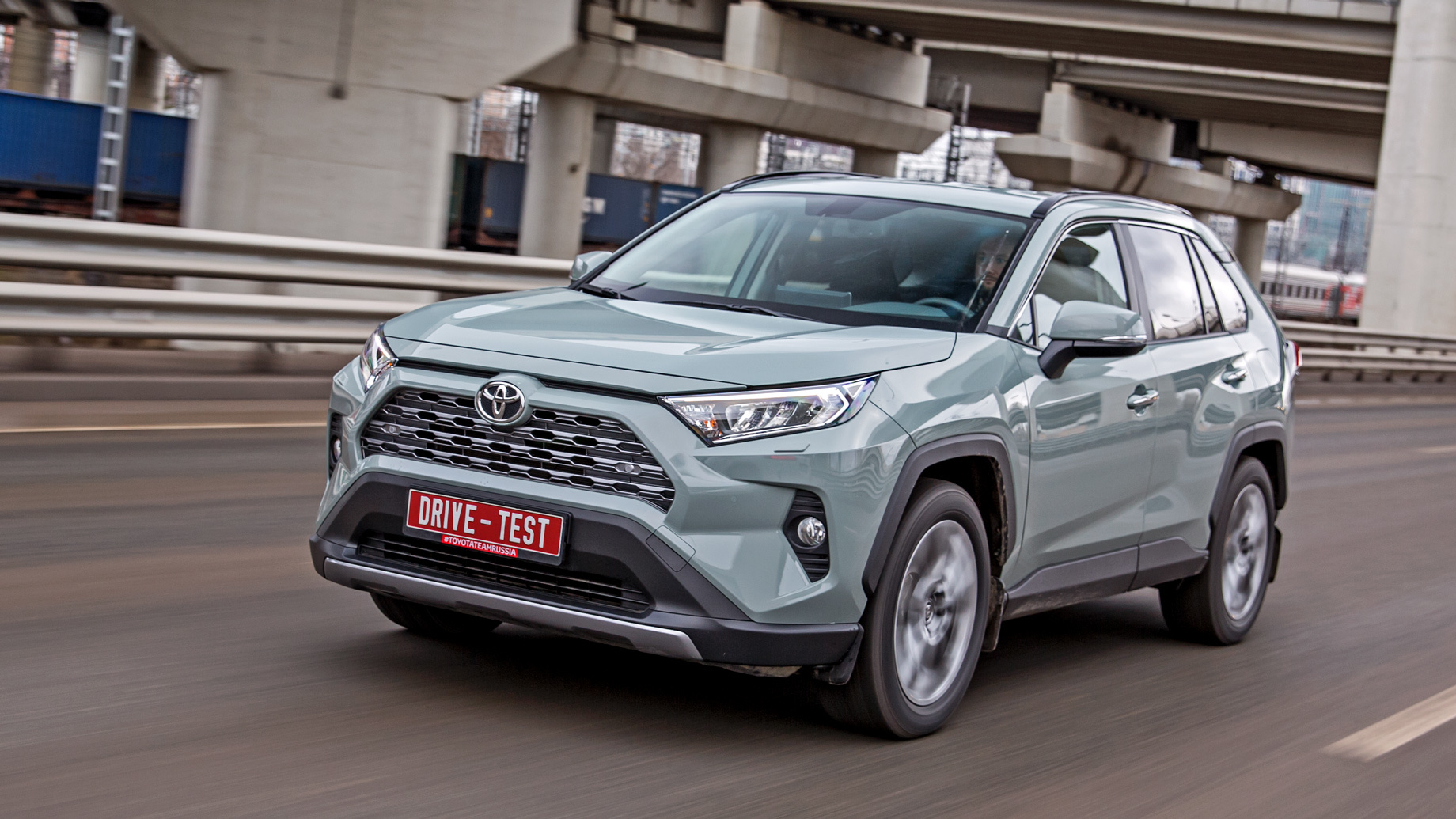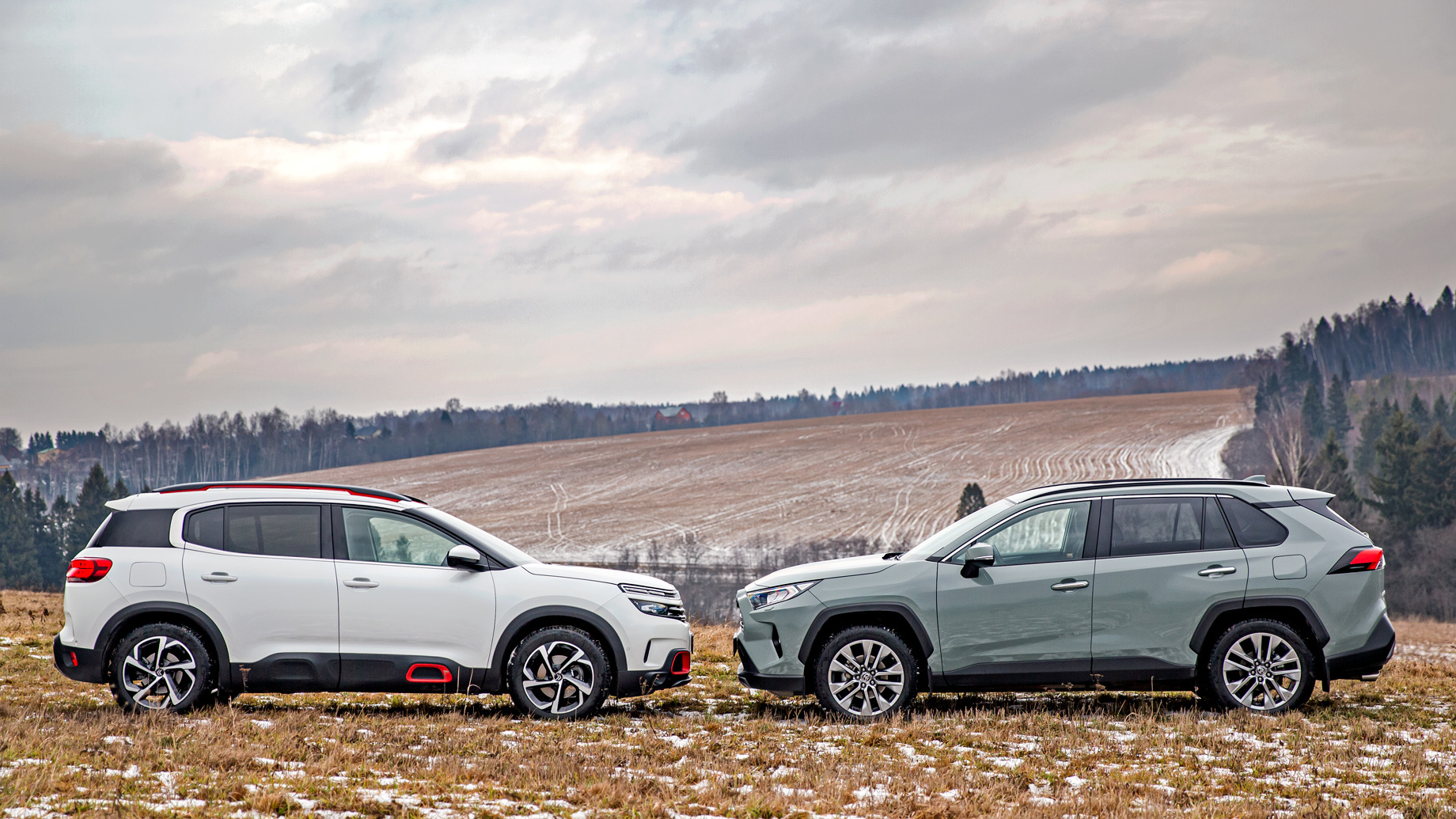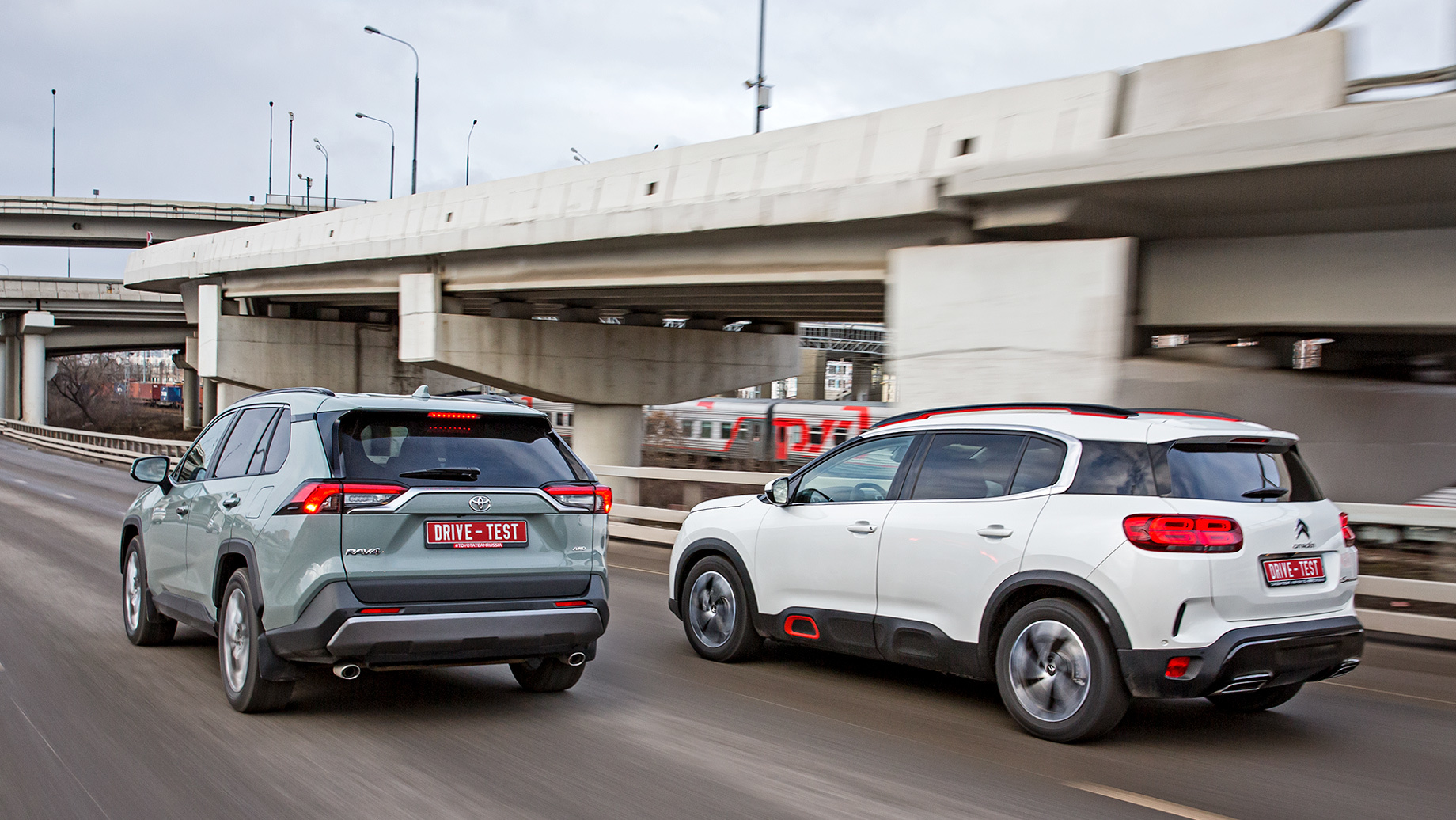How can the Citroen C5 Aircross and Toyota RAV4 be compared? While Toyota may outsell Citroen by a wide margin, these two crossovers compete in the same popular segment at comparable prices — and each brings unique strengths to the table. The RAV4 offers all-wheel drive even with its base 2.0 engine, while the C5 Aircross is available with an efficient diesel option. We tested both configurations and discovered a surprising ideological similarity between them.
Exterior Design and Build Quality
Both crossovers feature distinctive designs that appeal to different tastes. The Toyota RAV4 embraces a rugged, machismo aesthetic reminiscent of the Prado or even the Land Cruiser 200. The Citroen C5 Aircross, on the other hand, showcases unmistakably French styling with ornate details throughout.
Key exterior differences include:
- Panel gaps: The RAV4 features large but consistent body gaps, while the C5 Aircross suffers from uneven panel alignment
- Door coverage: Toyota covers all thresholds with doors; keyless access works only on front doors
- Lighting details: Toyota saved on backlighting — only the driver’s power window button glows blue

Interior Quality and Design
Surprisingly, despite having a higher proportion of soft upholstery materials, the RAV4’s interior feels cheaper than the Citroen’s cabin. The C5 Aircross benefits from thoughtful details that elevate its perceived quality.
Citroen’s interior advantages:
- Fabric trim on A-pillars adds a premium touch
- LED dome lighting throughout
- Avant-garde electronic instrument panel
- Modern automatic selector design
- Larger, better-finished storage compartments
Rear Passenger Space and Comfort
The Toyota RAV4 excels in rear passenger accommodation. There’s more than enough space for adults, even those wearing bulky footwear, and entry is effortless. The Citroen offers equal cabin width, but the high, firm seats feel perch-like, and protruding seat belt buckles limit lateral movement.
The C5 Aircross does shine for families with children:
- Isofix mounts available on the front passenger seat
- Rear Isofix mounts positioned to allow a passenger between two child seats
- However, limited legroom means children’s feet will reach the front seatbacks
The Citroen’s three-part adjustable rear bench only slides forward to increase cargo space — a feature that proves neither particularly useful nor versatile in practice.
Cargo Space and Trunk Features
Both crossovers offer equal cargo capacity, but execution differs significantly:
- Citroen C5 Aircross: Better trunk finishing, hands-free closing via swing sensor (locks trunk and central locking simultaneously), but tailgate rises only 5’8″ from the ground
- Toyota RAV4: Electric tailgate requires a 10-second wait, then separate locking via key fob or door button
Infotainment and Technology
Toyota’s media system suffers from excessive conservatism. Issues include dull graphics, limited functionality, and poor ergonomics that force drivers to reach for the screen and surrounding buttons.
The RAV4 compensates with superior visibility:
- High driving position
- Wider mirrors positioned away from pillars
- Well-developed cleaning zones for front and rear windows
- Traditional CVT selector shifted toward the passenger (consistent across left and right-hand drive versions)

Driving Experience: Toyota RAV4 2.0 AWD
The RAV4 starts impressively smooth, swaying gently on good asphalt with slightly delayed responses to inputs. However, several issues emerge during acceleration:
- Excessive noise from tires and outside traffic even at city speeds
- Constant, intrusive engine drone
- Insufficient torque from the naturally aspirated engine forces revs to climb to 3000-4000 rpm under any significant throttle input
The CVT behavior proves frustrating. At light throttle (up to one-third pedal travel), the transmission works smoothly. Release the accelerator and revs drop; press again, and you must wait through transients. Sport mode offers minimal improvement — only deep pedal inputs trigger simulated gear shifts and acceptable speed control. Fortunately, full-throttle overtaking maneuvers feel confident and safe.
Driving Experience: Citroen C5 Aircross Diesel
The Citroen responds to most button presses with a one-second delay, particularly annoying when starting the engine. At idle, the diesel exhibits noticeable vibration — an issue reported by multiple owners on automotive forums, appearing either in cold weather or after several hundred miles.
Despite these quirks, the French powertrain delivers:
- Assertive, quiet acceleration
- Smooth, refined power delivery
- Aisin eight-speed automatic (though it struggles in traffic with inconsistent clutch engagement)
Seating Position and Ergonomics
Finding the ideal driving position in the C5 Aircross proves challenging — lowering the seat cushion causes it to tilt backward heavily. However, the seat profile distributes weight optimally, reducing fatigue on long journeys.
Citroen ergonomic advantages:
- Lighter steering wheel and pedals than Toyota
- Better feedback through controls
- Smaller turning circle
On smooth roads, the C5 Aircross floats on its Progressive Hydraulic Cushions suspension without rocking. However, steering or braking inputs inevitably cause slight but noticeable body roll — an unusual sensation that takes adjustment.

Ride Quality on Rough Roads
The Citroen’s sophisticated suspension falters on poorly maintained roads. Here’s how both crossovers compare:
- Minor bumps: Citroen handles better than Toyota
- Medium bumps: Both perform equally
- Large potholes: Citroen’s hydraulic suspension breaks down unpredictably, forcing slower driving on rough surfaces
The RAV4’s conventional suspension offers more consistent energy absorption, even on 19-inch wheels compared to Citroen’s 18-inch setup. Overall ride smoothness earns equal marks for both vehicles.
Handling and Cornering Performance
The Toyota RAV4 handles predictably for a crossover, though its behavior can surprise unwary drivers. Higher trim levels feature a transmission with individual clutches for each rear axle shaft, but the effect remains visible only on the dashboard — the car itself barely responds to traction adjustments.
RAV4 handling characteristics:
- Comfortable suspension dislikes only short asphalt waves
- Relaxed driving feel can lead to unexpectedly fast corner entry
- Initial understeer transitions suddenly to oversteer, caught by stability control
- Safe but inconsistent character for a comfort-focused crossover
The C5 Aircross demonstrates superior cornering balance. After initial body roll subsides, it tracks through corners more confidently and accurately. The steering provides genuine feedback — more sincere than the RAV4’s wheel, which obsessively seeks center position.
Off-Road Capability
The all-wheel drive RAV4 significantly outperforms the front-wheel drive Citroen off-road. Both vehicles include terrain mode selection systems, but the C5 Aircross’s Grip Control proves largely ineffective — ironically, Snow mode works best in Sand setting.
Additional off-road considerations:
- Citroen occasionally rolls backward when starting — hill-start assist only activates on slopes over 8%
- C5 Aircross features steel underbody protection
- Both vehicles offer identical 6.6-inch ground clearance (Toyota uses plastic protection)

Winter Performance and Cold Weather Features
Both crossovers handle winter conditions adequately, with different approaches to cabin heating:
Citroen C5 Aircross:
- Electric auxiliary heater delivers cabin warmth within 1-2 minutes
- Compensates for slower diesel warm-up and gradual seat heating
- Webasto remote start allows entering a pre-defrosted vehicle
Toyota RAV4:
- Heated windshield with visible heating elements
- Heated steering wheel warms only grip areas
- May not suit all cold-climate drivers
Final Verdict: Citroen C5 Aircross vs Toyota RAV4
Beyond brand loyalty, the RAV4 offers two compelling advantages over the Citroen: superior rear passenger space and available all-wheel drive. Whether these benefits matter depends entirely on individual priorities.
The Citroen C5 Aircross counters with:
- Better powertrain refinement
- Superior handling characteristics
- More comprehensive standard equipment
- Independent configuration options (unlike Toyota’s predetermined packages)
Ignore the test car’s inflated price with optional Nappa leather and panoramic roof. Like most modern European vehicles, the C5 Aircross allows buyers to configure exactly what they want. Toyota’s approach bundles options into fixed packages, limiting personalization. Ultimately, Citroen treats each buyer as an individual, while Toyota designs for the masses.
This is a translation. You can read the original here: https://www.drive.ru/test-drive/citroen/toyota/5e3ad459ec05c44747000005.html

Published March 02, 2023 • 7m to read





